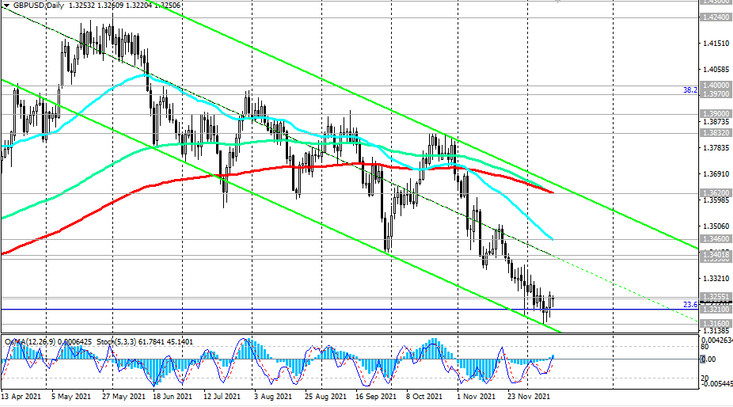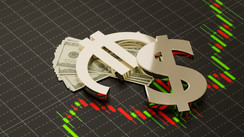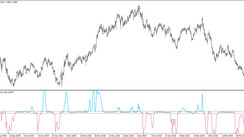A week, extremely saturated with important economic events, has begun, during which meetings will be held at once by 4 of the world's largest central banks (FRS, Bank of England, Bank of Japan, ECB). The main focus of traders is likely to be focused on the Fed meeting. As you know, the US central bank approved a plan to start curtailing the asset purchase program, although it left interest rates at the same level, close to zero (the target range for the federal funds rate remained the same, 0.00% -0.25%). Its executives decided to cut bond purchases by 15 billion in November and another 15 billion in December. In their opinion, such a reduction in the volume of acquired assets "is likely to be appropriate every month", although they are ready to adjust the pace of curtailment of purchases, "if it is justified in view of changes in the outlook for the economy".
Even last year, the Fed formulated the conditions under which an increase in interest rates would be justified: inflation should aim at a moderate excess of 2%, and the labor market should return to the state it was in before the pandemic began. Now we see that inflation is significantly higher than the Fed's target level of 2%, and, according to Fed Chairman Powell, this is no longer temporary. At the same time, the American labor market continues to recover (data on claims for unemployment benefits published last week showed a decrease in claims to 184 thousand, the lowest level since 1969), and positive macro data continues to come from the country.
"The economy is in very good shape, inflationary pressures are high, therefore, in my opinion, it is advisable to consider shifting the curtailment of asset purchases, which we actually announced at the November meeting, for a few months earlier", Powell said.
Last Friday, the US dollar weakened slightly after the publication of fresh data on consumer inflation. According to the Department of Labor Statistics, the consumer price index (CPI) in November rose by 0.8% (+6.8% in annual terms). The forecast assumed an increase in CPI in November by 0.7% (+6.8% in annual terms). Thus, inflation in the US in November again exceeded economists' expectations, remaining at the highest levels of the last 39 years. This is likely to heighten fears of the Fed leadership about high inflation and force them to accelerate the pace of stimulus reduction already during the meeting this week. Some economists believe the Fed is likely to double the pace of its stimulus cut, given high and sustained inflation.
If after the meeting, which ends on December 15, Fed leaders accelerate the pace of reduction in asset purchases, for example, to $ 30 billion a month, then the QE program may be completed by March, which will increase the likelihood of a rise in interest rates in the first half of next year.
The DXY dollar index lost 0.15% on Friday and last week. However, the importance of higher Fed interest rates and the prospect of widening divergence in US interest rates (compared to other advanced economies in the world) are coming to the fore, creating the preconditions for further strengthening of the dollar.
On Monday, the DXY dollar index is growing again. At the time of this posting, DXY dollar futures are traded near 96.36 mark, above the midpoint of the range between local highs near 96.94 mark and local lows near 95.54 mark reached in late November, while remaining in the 16-month local highs zone. A breakdown of the upper border of this range will signal the continuation of the dollar's uptrend.
As we noted above, the Bank of England will also hold its regular monetary policy meeting this week. Most likely, we will not see unexpected solutions here. In the UK, the situation with the coronavirus has worsened again. Last week, the country's government introduced new restrictions due to the emergence of a new strain of the omicron coronavirus. The British government said the number of omicron-strain infections is doubling every two to three days, which could push the number of infections to more than one million by the end of the month (there have been 10.6 million infections in the UK since the start of the pandemic).
The pound is also under pressure from weak macro statistics from the United Kingdom and the aggravation of the situation around the Northern Ireland protocol. The British government believes that due to shortcomings in this part of the Brexit agreement, the country faced a shortage of goods and supply disruptions, but Brussels refuses to revise this protocol, and the UK government has made it clear that they are ready to resort to extreme measures, bearing in mind the unilateral introduction of protective measures to preserve the integrity of the trading space.
At the same time, according to recently released data, the dynamics of UK GDP indicated a sharp slowdown in October, to 0.1% from 0.6% in September (the forecast was 0.4%), and industrial production in October fell by 0.6% after falling by 0.4% in September. In annual terms, the pace of production slowed down from 2.9% to 1.4%, which also turned out to be worse than forecast. The manufacturing sector forms a significant part of the total British GDP, and its sharp slowdown could have an extremely negative impact on the pound in the near future.
However, the volatility in its quotes, and, accordingly, in the GBP / USD pair, may increase tomorrow, when fresh data from the British labor market will be published at 07:00 (GMT).
The forecast assumes that the December report of the UK National Statistics Office (ONS) will indicate an increase in average wages, including bonuses, for the last calculated 3 months (August-October) by +4.5% (against +5.8%, +7.2%, +8.3%, +8.8%, +7.3% in previous periods) and without premiums - by +4.0% (against +4.9%, +6.0%, +6.8 %, +7.4%, +6.6% in previous periods). Thus, the data indicate a slowdown in the dynamics of wage growth, which is a negative factor for the pound. If the data turns out to be better than forecast, the pound is likely to strengthen in the foreign exchange market, but the growth of the GBP / USD pair is likely to be short-lived.
According to economists, the Fed's expected decision on Wednesday will support the dollar, and the Bank of England's decision, which will be published on Thursday (at 12:00 GMT), will put pressure on the pound: the Bank of England is likely to postpone its rate hike plans to a later date.






